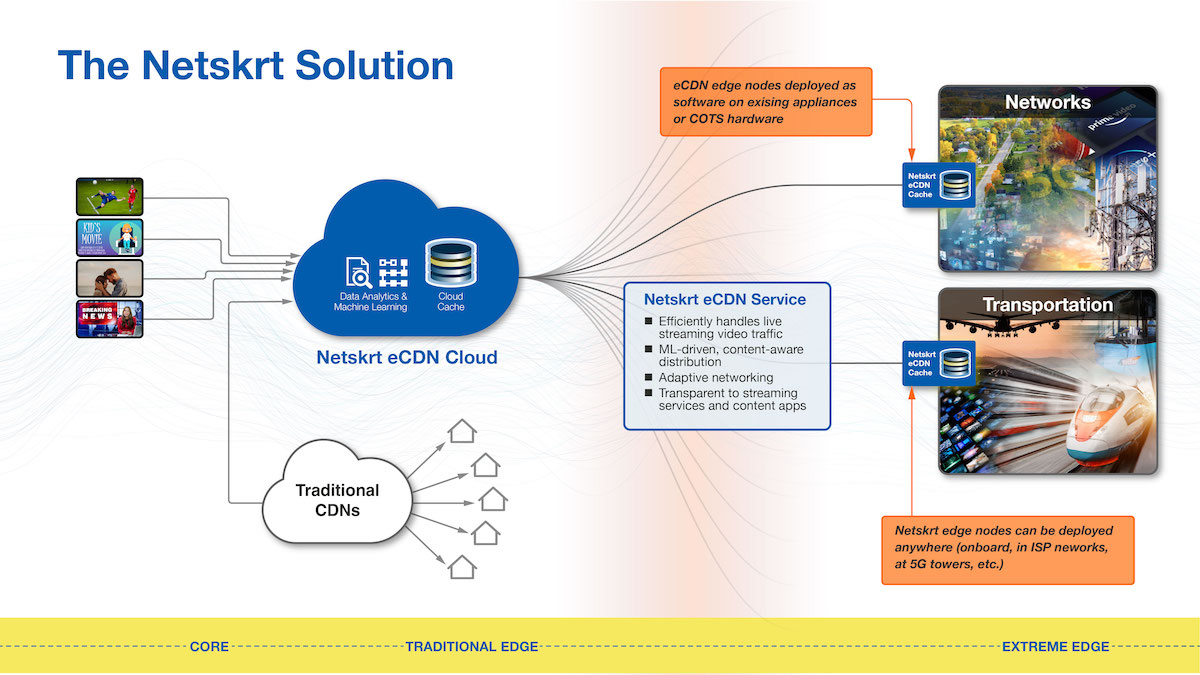Are you ready to catch the Streaming Video wave?
The huge shift from linear TV to online streaming services presents an opportunity and a threat to providers at the extreme edge of the internet. It’s a tsunami that threatens to swamp ISP networks as subscribers sign on all at once to watch exclusive streaming pro sports events. For airlines and rail operators it’s a profitable wave that can increase customer satisfaction, reduce costs, and generate new revenue.
At Netskrt, we set out to make streaming video – live and on demand – rock wherever your customers are
- Our ISP customers are making streaming rock for their subscribers, no matter how remote they are.
- Our airline partners are changing inflight entertainment with full access to streaming video.
- Rail operators are delivering high quality video streaming even as trains speed through the countryside and tunnels.
What is an eCDN?
Netskrt Systems offers a radically new type of content delivery network (CDN) and edge cache, that ensures high-quality on-demand and live streaming video in the hardest-to-reach points on the internet.
The Netskrt edge CDN (eCDN) is positioned at the extreme edge, in the last subnet in ISP networks, no matter how small or remote, and on board planes and trains. Cloud-based, title and network aware content management predictively loads content onto these caches, giving customers an ‘at home in the city’ viewing experience, wherever they are.



